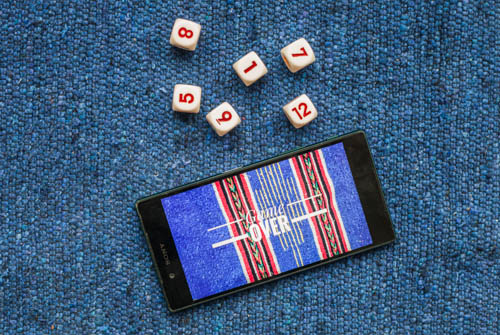Five common mistakes of mobile game localisation
 Localisaiton of mobile games seems to be an easy way to increase your sales figures and achieve higher download rates. As straightforward as this process might be, there is a plethora of things that can slip your attention once you start going into details and adjusting your mobile games to a foreign market. Below you can find five mistakes of mobile game localisation to help you avoid the most common traps.
Localisaiton of mobile games seems to be an easy way to increase your sales figures and achieve higher download rates. As straightforward as this process might be, there is a plethora of things that can slip your attention once you start going into details and adjusting your mobile games to a foreign market. Below you can find five mistakes of mobile game localisation to help you avoid the most common traps.
1. Focusing on the text strings only
Localisation includes much more than just displaying the text strings in another language version. If the only adapted element in your mobile game is the language, your users may fail to fully enjoy your game and understand all peculiarities, functions or features. Graphic, layout, colours or navigation are equally important, so make sure that every single item of your mobile user interface is tailored to needs and expectations of your target group from another culture.
2. Ignoring app store descriptions
Even if your app is fully and correctly localised you might fail to reach large numbers of users if your app store description isn’t clear. A good app description can help you increase your download figures across the world, but only if your users can decode your message. Try to find out what types of descriptions are the most suitable among your target users: with the focus on features or benefits? Serious or with creative word puns and humour? Make sure that the screenshots are localised as well to provide a consistent image of your mobile game.
3. Using machine translation
There’s nothing worse than reducing the localisation process to the mere use of machine translation. As effective as the MT results might be for some technical terms and phrases, this method fails when it comes to creative texts or strings heavily depended on the wider context, which happens in translation of mobile games. To adapt the content to the new markets and cultures you’ll have to make sure that there is no unclear, confusing or incorrect wording in your game and that your users are absolutely sure what every button, description and menu item means. That’s why you’ll need to work with professional localisers and leave machine translation for other, less complex purposes.
4. Leaving unlocalised and untranslated strings
Leaving untranslated strings in your app may do more harm than good. In the worst case scenario, your users will abandon your game and look for entertainment elsewhere. With multiple language versions and hundreds or thousands of strings it’s easy to overlook some parts of the game and leave the strings untranslated. Automatic verification and localisation tests carried out by a qualified team will help to reduce the risk of publishing your game with mistakes and omissions. Unlocalised strings often occur in updates implemented after the game release, so remember to localise the newly added strings in all language versions.
5. Publishing untested games
All the localisation lapses above can be easily detected during localisation testing. However, many app developers ignore or reduce the extent of this process to save time and money. Even worse, the testing is carried out by non-native or not qualified team members who are not able to identify linguistic or cultural glitches. A lousy game with strings left in the original language, with overlapping texts or functionality issues may frustrate your gamers and make them press the scary “Uninstall” button. That’s why your mobile game localisation process should include at least two rounds of localisation testing run by experienced localisers to verify whether your user interface meets the local requirements.
Mobile app localisation can be a tricky enterprise, so treat with caution and make sure you collaborate with the right team. In this way you’ll be able to provide your users across the world with the best mobile gaming experience.
About the author: Dorota Pawlak
Dorota Pawlak is a localization consultant for digital and Web 3.0 brands. She enjoys helping businesses enter new markets and is passionate about cultures, languages, and technology.
Share with friends